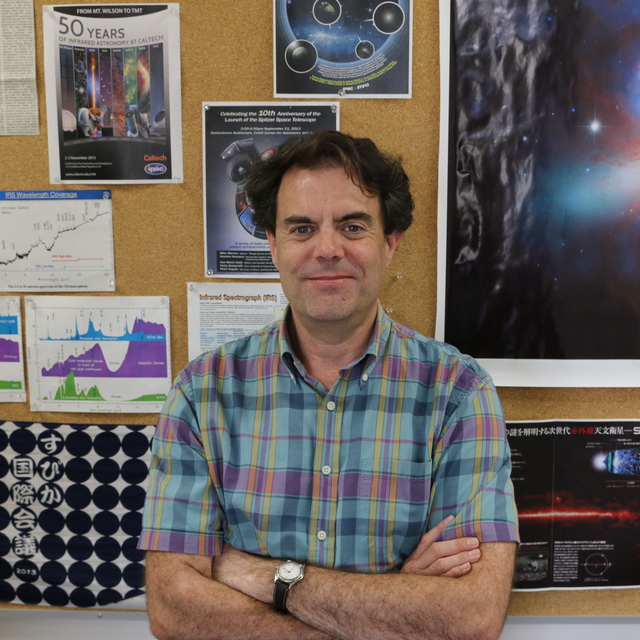December
2021
•
2021ApJ...923..278L
Authors
•
Linden, S. T.
•
Evans, A. S.
•
Larson, K.
•
Privon, G. C.
•
Armus, L.
•
Rich, J.
•
Díaz-Santos, T.
•
Murphy, E. J.
•
Song, Y.
•
Barcos-Muñoz, L.
•
Howell, J.
•
Charmandaris, V.
•
Inami, H.
•
U, V.
•
Surace, J. A.
•
Mazzarella, J. M.
•
Calzetti, D.
Abstract
•
We present the results of a Hubble Space Telescope WFC3 near-UV and Advanced Camera for Surveys Wide Field Channel optical study into the star cluster populations of a sample of 10 luminous infrared galaxies (LIRGs) in the Great Observatories All-Sky LIRG Survey. Through integrated broadband photometry we have derived ages, masses, and extinctions for a total of 1027 star clusters in galaxies with d L < 110 Mpc in order to avoid issues related to cluster bending. The measured cluster age distribution slope of ${dN}/d\tau \propto {\tau }^{-0.5+/-0.12}$ is steeper than what has been observed in lower-luminosity star-forming galaxies. Further, differences in the slope of the observed cluster age distribution between inner- ( ${dN}/d\tau \propto {\tau }^{-1.07+/-0.12}$ ) and outer-disk ( ${dN}/d\tau \propto {\tau }^{-0.37+/-0.09}$ ) star clusters provide evidence of mass-dependent cluster destruction in the central regions of LIRGs driven primarily by the combined effect of strong tidal shocks and encounters with massive giant molecular clouds. Excluding the nuclear ring surrounding the Seyfert 1 nucleus in NGC 7469, the derived cluster mass function (CMF; ${dN}/{dM}\propto {M}^{\alpha }$ ) offers marginal evidence for a truncation in the power law at M t ~ 2×106 M ⊙ for our three most cluster-rich sources, which are all classified as early stage mergers. Finally, we find evidence of a flattening of the CMF slope of ${dN}/{dM}\propto {M}^{-1.42\pm 0.1}$ for clusters in late-stage mergers relative to early stage (α = -1.65 ± 0.02), which we attribute to an increase in the formation of massive clusters over the course of the interaction.
Links




